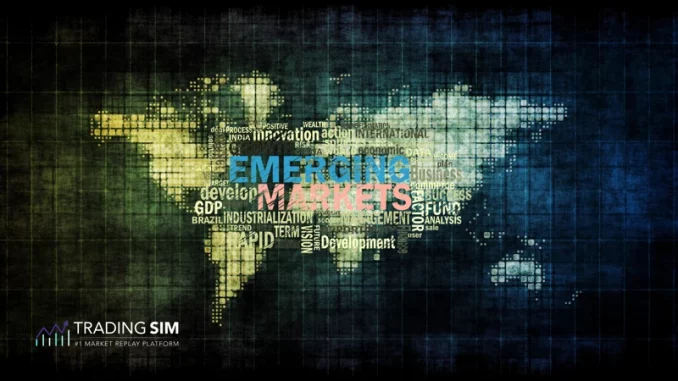
Determined by policies such as interest rate adjustments and quantitative easing, they have important consequences for world economic growth and vital questions of investment values around Earth. And so to understand the effects of these policies on world markets one needs take into account both 1) how central banks are managed internally, and 2) what their overall effect is in economic terms. What Do Central Banks Do?
The Services and Strategies of Central Banks
The central bank is the most important financial institution in every country, and will take up several means to regulate economic activity:
Interest Rates: The closest central banks come to being able to influence the economy directly. A reduction is analogous to an injection of stimulants in digusted veins; conversely, an increase can be used as a means of strangling inflation.
Open Market Operations (OMO): Buying and selling government securities to affect the level of reserves in the banking system, and therefore short-term interest rates.
Quantitative Easing (QE): When the normal policy tools of monetary policy have been pushed to their limit, central banks may turn to QE–buying long-term securities in an attempt to inject liquidity into the economy, and so drive long-term interest rates down.
Reserve Requirements: By adjusting the amount of reserves banks must hold, central banks can affect both the total quantity and rate at which money is circulated in an economy.
Forward Guidance: Through communication strategies, central banks are trying to influence market expectations of future economic conditions and policy orientations.
Central banks ‘ actions have global crises: –Money valuation A rise of interest rates will raise the value of the dollar directly affecting the exchange value of any foreign currency.During the high profit period that follows, firms dividing capital among themselves will be reluctant to spend abroad. At the same time, a resulting higher rates of return attracts more investment from overseas. This will inevitably push up the price a currency commands on markets; conversely when interest rates fall foreign money staying out and exchange rates also take a dip. This has to have a massive impact on world trade.
The Impact of Investment Is rudely Central bank policies motivate investment decisions that investors make worldwide -Whether for good or ill. Thus, when intrrest rates fall, stock market valuations soar as people try to get more income. Conversely, when rates go up, there will be financial flows from “external ” 6 markets into “information” 8 countries with higher yields.
Inflation Placed Geographically: Central banks in adjusting policy to keep prices down are bound inevitably to have an impact on global commodity prices.For instance, if the interest rates here rise to a reasonable level that leads international commodity demand will fall and so should world prices also decline.
Central banks are constructors like this for By this way they can increase liquidity in financial markets and might perhaps contain it to some extent. But if interest rates remain at a very low level over a period of time, this will lead to asset bubbles and increased financial risk.
Global Economic Sync: Central banks’ policies can coordinate the cycles of world economics. As for example, when major central banks all ease monetary policy simultaneously they will be promoting the growth of world economy; if on the other hand policies diverge – a situation which has already contributed to global imbalances – then major banks have a very uncertain future in front of them indeed.
The recent years have seen central banks of various nations face an economic mix of low inflation, modest growth and geopolitical uncertainties. For example, the US Federal Reserve, the European Central Bank (ECB) and Japan’s Bank of Japan have all had to implement unconventional monetary policies in response to these difficulties.
Yet these policies have produced diverse check results indeed.The policy of interest rate declines across advanced countries as a savings compensate for their lackluster growth begins to work the other way around in some parts of the developing world. It causes their nominal exchange rates to fall dramatically against those abroad and exports become statically less competitive on international markets natu-rallyThe data used are summary figures, and some are subject to forecasts. Actual results may differ from the above estimates.
Interest Rate Divergence: Different interest rate policies among major central banks cause diverse impacts on global capital flows and currency valuation.Debt Levels: Low interest rates for a long period have caused public and private debt levels to remain at a high level, increasing worries about long-term financial stability.Emerging Market: The policies of central banks in developed economies can pass down to developing countries, thus impacting their financial state and even future.Detractors argue that the usefulness of floods coverage is somewhat limited due to various reasons.
Firstly, it places those living in floodplains in a more dangerous situation than now; secondly, if people cannot get out of danger quickly enough, then by the time rescuers arrive on the scene much worse will have been done than if they had used their own strength and ability to somehow avoid being caught up in floods; thirdly, there seems to exist an implied assumption that food itself has some sort of ‘intrinsically good’ quality. As the central banks of the world keep on “flexing their muscles”, it is quite clear why these decisions are important.
They will dominate the shape of global markets for years to come. Investors and policy makers need to be watching all the time, for the simple reason that however well central banks perform their operations, they can be expected to dominate the entire picture for much of the global economic landscape in the forseeable future.Given all of this, central banks are a huge force in world affairs, and their policies impact economic conditions and financial markets deeply.Understanding how central banks operate the broader impact of their maneuvers, then becomes essential to better negotiate the world’s complex financial scene and make informed decisions as we enter an ever-changing economic era.